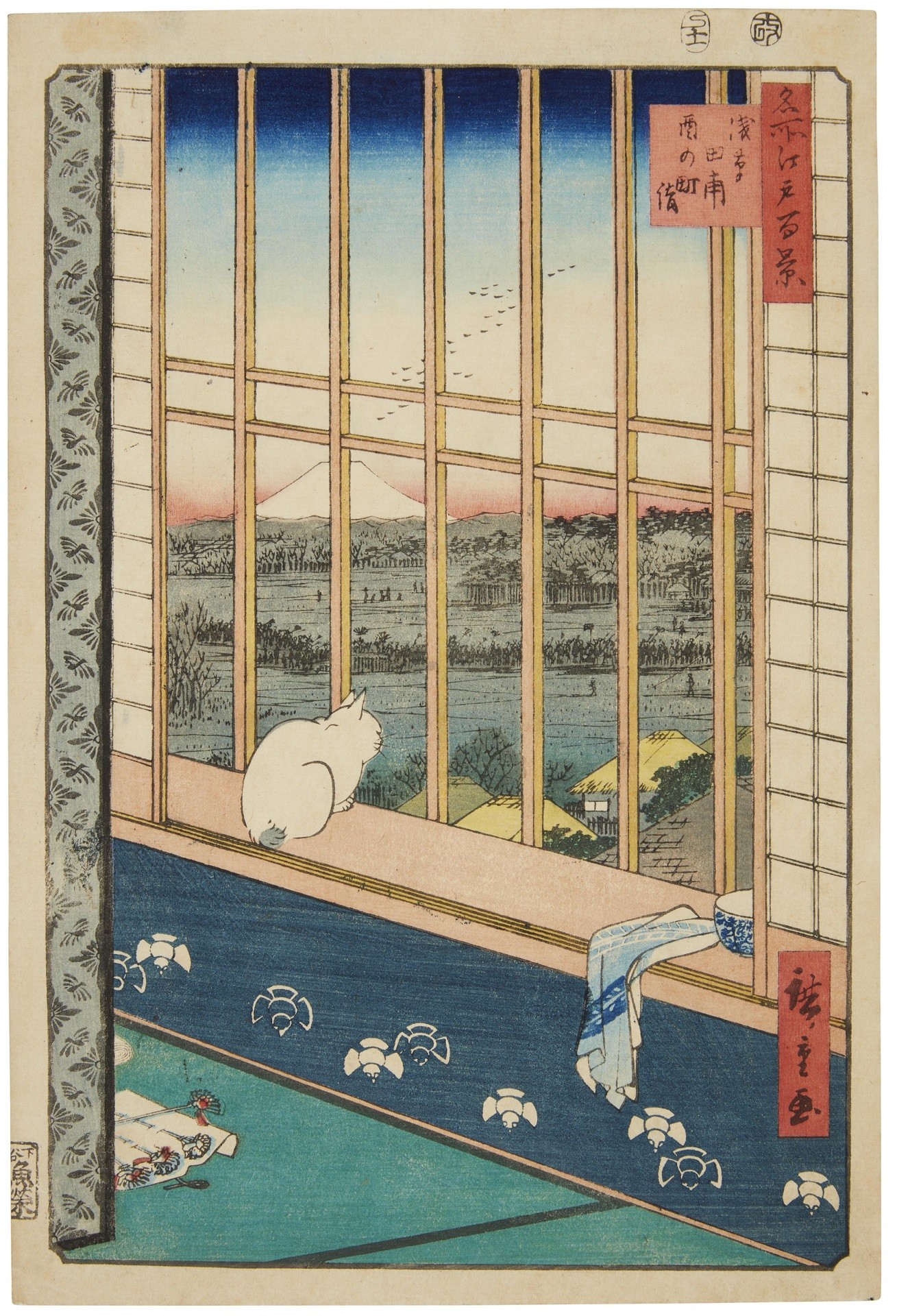Do You See a Woman? She Is there: How to Read Riddle Paintings by Hiroshige
If you search for Utagawa Hiroshige on Christie’s website, you will have 772 results. Hiroshige was a rather productive artist and left behind over 5,000 ukiyo-e woodblock prints. His work spread all over the world and impacted Western art, at some point becoming a part of the DNA of impressionists.
In the mid-19th century, Japan entered the enlightenment era. Emperor Meiji opened the borders and modernized the country. However, shortly before that Utagawa Hiroshige managed to capture traditional Japan.
All of his paintings are multi-layered. The meaning of the painting is often hidden, and to decipher it, you need to know the cultural code. The citizens of Edo (old name of Tokyo) knew this code. For contemporary people it is harder.
To decipher the painting, you need to know the cultural code. The citizens of Edo (old name of Tokyo) knew this code. For contemporary people it is harder.

Photo: Christie’s
The painting titled Asakusa Rice Fields and Torinomachi Festival depicts a frowning cat. To understand the cat’s displeasure, one needs to pay attention to the details.
One of the recognizable ones is Mount Fuji. The Japanese portray the mountain that is holy to them everywhere, and Hiroshige has it in 70% of his paintings. In this one, Fuji is a waymark that gives a knowledgeable viewer an idea about the part of town where the artist is located.
In the 19th century, grates on windows were put in brothels. The author paints the room while definitely knowing what it looks like from the inside.
The interior also contains several hints about the plot. On the floor, there are objects that are reminiscent of miniature rakes. If one looks closely, one can see people with rakes outside the window. A rake is the main symbol of the Torinomachi Festival, it is used to rake in luck. The celebration is held at the Buddhist Sensoji temple in the Asakusa district, where the brothel seems to be located.
Here is an important detail: according to the traditions of that time, on the day of Torinomachi Festival, it was important for the prostitutes to have a client, otherwise they paid a fine to the brothel madam. A cup with leftover tea, napkins on the floor, the cat that had been expelled from the bedroom, the evening sky turning red — a girl who remains outside the frame won’t have to pay the fine.
Thirty years ago, Utagawa Hiroshige’s paintings were noticed by collectors and moved from flea markets to auctions. Asakusa Rice Fields and Torinomachi Festival was first auctioned in 1993 — and sold for 418 pounds.
This year, this work of Hiroshige was being auctioned at Christie’s again, with the preliminary price estimate of $10-20,000.
New and best




